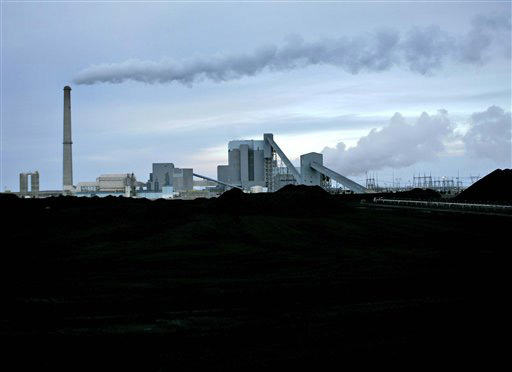The Energy Debates: Clean Coal

Editor's Note: "The Energy Debates" is a LiveScience series about the pros, cons, policy debates, myths and facts related to various alternative energy ideas. We invite you to join the debate by commenting directly on each article.
The Facts
In all three presidential debates this year, both President-elect Barack Obama and Sen. John McCain said they supported clean coal. But what exactly is clean coal? This vague term may refer to a variety of technologies that lead to cleaner emissions from coal power plants.
Clean coal usually now refers to the capture and storage of carbon dioxide from coal-fired power plants. Uncaptured, this greenhouse gas traps heat from the sun, leading to global warming. (Any captured carbon dioxide would probably be stored in liquid form deep underground.)
Clean coal may also include methods to reduce pollutants that result from coal-burning, such as: 1) the toxic metal mercury, 2) nitrogen oxides, which help create smog, 3) sulfur dioxide, which is linked with acid rain, or 4) tiny little soot particles, which contribute to thousands of premature deaths from heart and lung disease annually.
No commercial coal plants in the United States actually currently incorporate carbon capture systems.
Strategies for capturing and storing carbon released by coal plants would depend on how the fuel is used in the first place. All but two commercial coal plants in the United States rely on pulverized coal, explained clean energy advocate Barbara Freese at the Union of Concerned Scientists, a science advocacy group. To seize the carbon dioxide in the exhaust when this fuel is burned, the smoke in principle could get flowed past solvents that would draw in the gas, an energy intensive procedure that can require up to a third of the electricity the plant generates in the first place.
Get the world’s most fascinating discoveries delivered straight to your inbox.
The two remaining U.S. commercial coal plants turn coal into a concentrated gas dubbed "syngas," and before this fuel gets burned to generate power, the carbon dioxide could get removed by a variety of techniques, such as running it past solvents or advanced gas separation membranes. These techniques might theoretically be less energy intensive than carbon capture with pulverized coal.
Of the new generation of more than 100 coal plants now proposed for construction in the United States, including several syngas plants, all but two or three demonstration projects would still lack carbon capture and storage technology.
"It will probably require direct government subsidies to fund the first demonstration projects, which could come online in 4 or 5 years, at which point we'll know if the technology is worth further investment," Freese said.
When it comes to removing other pollutants from coal exhaust, each typically requires its own method, such as injections of activated carbon to capture mercury or manipulating combustion processes to control nitrogen oxide levels. Syngas technologies could make it easier to reduce mercury emissions by allowing the metal to be removed before the gas is burned.
Pros
Coal helps generate about half of the electricity in the United States, "so weaning ourselves off of coal is obviously going to be very difficult and take some time," Freese said. "Given the unprecedented, urgent threat we face with climate change, we can't afford to ignore any technological option that could be part of the solution."
Coal is also the nation's largest source of global warming pollution, representing about a third of U.S. emissions, equal to the combined output of all U.S. cars, trucks, buses, trains and boats, the Union of Concerned Scientists noted. "We might need these coal technologies to reduce our carbon dioxide emissions more quickly than we could if our only technological options were renewable energy sources and energy efficiency strategies," Freese added.
Another potential advantage of carbon capture and storage technologies is that if we develop this technology now, someday we could combine it with biomass-fueled power, where plants would feed on carbon, to create a power source "that actually has negative carbon emissions," Freese said.
Cons
Coal is the dirtiest of all fossil fuels, and not easy to clean. "You're taking an inherently very polluting fuel, with each pollutant posing myriad problems, and solving each with different technologies, and that keeps adding up in terms of cost," Freese said.
Cost is another con for coal-linked carbon capture and storage technology. It could easily increase the cost of energy from a pulverized coal plant by two-thirds to three-quarters, "way more than any of the other technologies needed to control the other pollutants," Freese said.
Even if carbon capture and storage works properly with coal exhaust, "you're depending on a nonrenewable resource for energy, and one that's notoriously destructive on the environment when it comes to mining it out," she added.
If carbon capture and storage do not work properly, "obviously there's the problem of carbon dioxide leaking into the atmosphere, and that undermines the whole point of capturing it in the first place," Freese said. "There's also the risk that leaks from pipelines or storage facilities carrying the concentrated gas can be fatal. Dissolved carbon dioxide is also acidic, and if it migrates into groundwater supplies it can carry toxins with it, poisoning the water."
What do you think?



